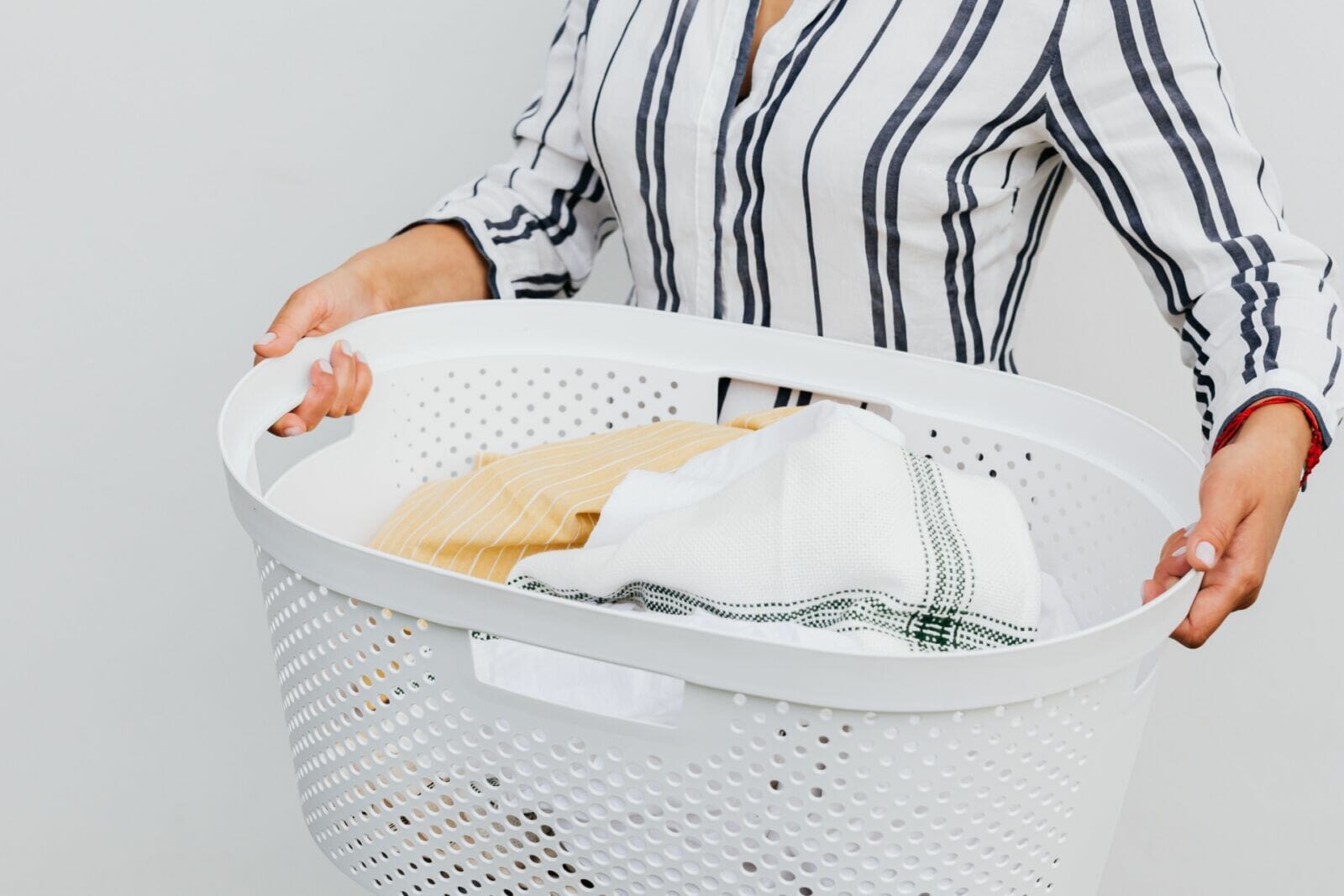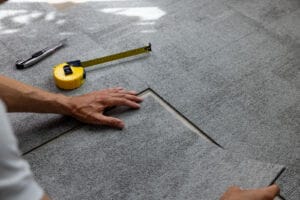With summer temperatures regularly exceeding 110 degrees, Arizona homeowners are increasingly turning to local energy-saving dryer repair services to reduce their skyrocketing utility bills. What many don’t realize is that timely residential dryer repair and maintenance solutions can dramatically impact not just the longevity of these essential appliances, but also play a significant role in the state’s broader energy efficiency goals. As Arizona continues to position itself as a leader in sustainable living and business practices, the humble clothes dryer has emerged as an unexpected focal point in the conversation about residential energy consumption and smart resource management.
LOCAL NEWS: 100 best places to work and live in Arizona for 2025
The Hidden Energy Drain in Arizona Homes
Arizona’s unique climate presents specific challenges when it comes to household energy efficiency. While much attention focuses on air conditioning systems, clothes dryers often fly under the radar despite consuming as much energy as three refrigerators combined in the average household.
The numbers paint a compelling picture: according to energy consumption studies, dryers can account for approximately 12% of electricity usage in Arizona homes. That’s substantial in a state where summer electricity bills can already strain family budgets. When dryers function inefficiently due to maintenance issues, that percentage climbs even higher.
A Phoenix-based energy consultant recently shared an eye-opening observation: “I audited a home where the dryer was taking three cycles to dry a single load of towels. The homeowner had no idea this wasn’t normal. After a simple repair and vent cleaning, their monthly energy bill dropped by nearly $40.” This anecdote represents thousands of similar scenarios playing out across the state, where simple dryer repairs translate to significant energy and cost savings.
The Business Case for Preventative Maintenance
Smart businesses understand that preventative maintenance always costs less than emergency repairs or replacements. This principle applies perfectly to dryer maintenance, creating a compelling business case for regular upkeep.
Consider this: the average cost of a comprehensive dryer repair in Arizona ranges from $150 to $300, while a new energy-efficient model starts around $800 and can easily exceed $1,200 with installation. Regular maintenance can extend a dryer’s lifespan by 5-7 years, essentially saving homeowners thousands over time.
Beyond the direct financial benefits, businesses that emphasize preventative maintenance build stronger customer relationships. A Tucson appliance repair business owner noted, “When we help customers understand how simple maintenance saves energy and extends appliance life, they become loyal clients across all their appliance needs. It’s like planting seeds that grow into a forest of business opportunities.”
For property managers and multi-family housing operators, implementing regular dryer maintenance programs across dozens or hundreds of units can translate to substantial operational savings. One Scottsdale property management company reported reducing their dryer-related service calls by 60% after implementing quarterly preventative maintenance, while simultaneously lowering their properties’ energy consumption.
Arizona’s Energy Efficiency Programs: The Dryer Connection
Arizona has positioned itself at the forefront of residential energy efficiency with programs like the recent Efficiency Arizona initiative, which allocates millions to household energy efficiency improvements. While many residents associate these programs with larger appliances like HVAC systems, dryer maintenance and repair also qualify under many rebate structures.
The Arizona Public Service (APS) and Salt River Project (SRP) both offer incentives for energy efficiency upgrades that can include dryer maintenance or replacement. These programs reflect a growing recognition that addressing smaller appliances collectively creates significant energy savings across the grid.
“Most people don’t realize that the Inflation Reduction Act and state programs can offset costs for maintaining or upgrading various household appliances, including dryers,” explained an energy policy specialist with the Governor’s Office of Resiliency. “These programs exist precisely because we recognize that collective small changes create meaningful impact across our energy infrastructure.”
Smart homeowners and businesses are leveraging these programs to offset maintenance costs while contributing to Arizona’s broader sustainability goals. The government incentives essentially create a win-win scenario where individual financial benefits align perfectly with community resource preservation.
The Technical Side: What Makes Dryers Energy Hogs
Understanding why dryers consume so much energy helps clarify why maintenance matters. Unlike most appliances that use electricity primarily to power motors or electronic components, dryers convert massive amounts of electricity directly into heat.
The physics is straightforward: it takes substantial energy to convert water from liquid to vapor. When a dryer’s efficiency decreases due to maintenance issues, that energy requirement increases dramatically. Common issues include:
- Clogged ventilation systems increasing run time by up to 30%
- Malfunctioning moisture sensors causing over-drying
- Worn drum rollers creating friction and inefficiencies
- Thermostat calibration problems resulting in excessive heat
Each of these issues represents an energy leak that regular maintenance can easily address. Think of a poorly maintained dryer as a garden hose with dozens of small punctures; you’re paying for all the water, but much of it never reaches its intended destination.
In Arizona’s hot climate, these inefficiencies compound further. Many homes keep dryers in garages or laundry rooms that aren’t air-conditioned. When dryers run longer than necessary, they generate excess heat that raises ambient temperatures, potentially increasing air conditioning demand in adjacent living spaces. It’s a domino effect of energy waste that proper maintenance can prevent.
The Environmental Impact: Beyond the Utility Bill
While cost savings drive most maintenance decisions, the environmental benefits merit equal consideration. Arizona’s unique desert ecosystem faces particular challenges from energy production and climate change.
Each kilowatt-hour saved through efficient dryer operation represents less demand on the grid and fewer emissions from power generation. Across Arizona’s more than 2.6 million households, optimizing dryer efficiency could collectively reduce carbon emissions by thousands of tons annually, according to sustainability researchers.
Water conservation, another critical Arizona issue, also connects to dryer efficiency. When clothes are spun more effectively in washing machines, they enter dryers with less moisture, requiring less energy to dry. Some repair specialists now offer comprehensive laundry system tune-ups that optimize both washers and dryers as an integrated energy-saving system.
The environmental calculation extends to appliance longevity as well. Manufacturing new dryers requires substantial raw materials and energy. Every year a dryer’s life extends through proper maintenance represents resources conserved and waste prevented. This cradle-to-grave perspective aligns with Arizona’s growing focus on circular economy principles and sustainable business practices.
DIY vs. Expert Repairs: A Cost-Benefit Analysis
For budget-conscious Arizona residents, the question often becomes whether to attempt dryer maintenance themselves or hire specialists. The answer depends on technical comfort level and the specific issues involved.
Basic maintenance like cleaning lint traps, checking and cleaning exterior vent openings, and inspecting door seals fall well within most homeowners’ capabilities. These simple steps alone can improve efficiency by 5-10% according to energy experts.
However, more complex issues like vent line cleaning, belt replacements, or electrical component testing often require specialized tools and expertise. Attempting these without proper knowledge can result in safety hazards or additional damage.
A Flagstaff appliance repair specialist offered this rule of thumb: “If the maintenance involves opening the dryer cabinet or working with anything electrical, the average homeowner should call a specialist. The cost of the service call is insurance against potentially expensive mistakes or safety issues.”
The economics makes sense as well. Professional vent cleaning services in Arizona typically range from $80-150, while the average emergency service call for a dryer fire can exceed $3,000, not counting potential property damage or insurance implications.
Seasonal Considerations for Arizona Dryer Maintenance
Arizona’s distinct seasons present unique considerations for dryer maintenance scheduling and practices. During the monsoon season, increased humidity can affect drying times and efficiency, while the extreme summer heat creates different challenges.
Smart maintenance scheduling aligns with these seasonal patterns. Many specialists recommend comprehensive dryer servicing in spring before the peak summer heat arrives, when energy demands are highest. This timing ensures optimal performance during the months when efficient operation matters most for both energy bills and environmental impact.
The winter months, when Arizona welcomes an influx of seasonal residents, represent another strategic time for maintenance. Property managers report scheduling preventative maintenance in early fall to prepare rental properties for winter residents, ensuring trouble-free operation during these peak occupancy periods.
Climate considerations also affect how dryers operate. During the summer months when indoor humidity is extremely low, clothes often need less drying time than manufacturer presets suggest. Simple adjustments to drying cycles based on seasonal conditions can yield significant energy savings, a tip regularly shared by energy-conscious repair specialists.
Business Opportunities in the Efficiency Economy
Arizona’s growing focus on energy efficiency has created expanding business opportunities in specialized maintenance services. Several entrepreneurs have built successful businesses focused exclusively on dryer vent cleaning and maintenance, marketing their services as both safety measures and energy-saving investments.
One Phoenix-based business owner who transitioned from general contracting to specialized dryer maintenance shared: “I noticed how many homes had poorly installed or maintained dryer vents. I started offering dedicated services focusing just on this niche, and within a year, it became a full-time business with three service vehicles. The demand is tremendous once homeowners understand the energy implications.”
The business model works because it creates measurable customer value. When homeowners see immediate improvements in drying time and corresponding decreases in energy bills, word-of-mouth referrals follow naturally. Several Arizona service companies report that over 70% of their new business comes from customer referrals, an enviable rate in any industry.
The specialized nature of the work also allows for premium pricing. While general appliance repair might be highly competitive, businesses focusing specifically on energy efficiency improvements can command higher rates based on the measurable return on investment they provide to customers.
Future Trends: Smart Dryers and the Connected Home
As Arizona continues its leadership in energy innovation, the integration of smart technology into appliance maintenance represents the next frontier. Newer dryer models already include moisture sensors that automatically adjust cycle times, but the next generation promises even more sophisticated energy management.
Connected dryers that communicate with home energy management systems are beginning to enter the market. These systems can schedule drying cycles during off-peak utility hours, automatically adjust settings based on current energy rates, and proactively alert homeowners to maintenance needs before efficiency degrades.
A Tempe-based home automation specialist predicted: “Within five years, we’ll see dryers that can self-diagnose maintenance needs and either alert homeowners or automatically schedule service through preferred providers. The technology already exists; it’s just a matter of integration and consumer adoption.”
For forward-thinking repair businesses, this evolution represents both a challenge and an opportunity. Technicians will need additional training in digital diagnostics and connectivity issues, but those who master these skills will be positioned at the leading edge of the industry as smart appliances become the norm rather than the exception.
Practical Steps for Arizona Homeowners and Businesses
For those looking to capture the benefits of proper dryer maintenance, several practical steps can yield immediate results:
- Schedule annual professional vent cleaning, especially for homes where the dryer vent run exceeds 10 feet or includes multiple bends
- Clean the lint trap before every load, not just when it appears full
- Consider upgrading older dryers to Energy Star certified models, which use approximately 20% less energy
- Explore utility company rebates and incentives for energy-efficient appliance maintenance and upgrades
- For businesses with multiple units, implement a regular maintenance schedule and track energy consumption to quantify savings
- Consider moisture sensor upgrades for older dryers to prevent over-drying and wasted energy
- Ensure laundry areas have adequate ventilation to prevent heat buildup that could affect dryer efficiency
These straightforward steps represent low-hanging fruit in the energy efficiency landscape, offering immediate returns with minimal investment. As one Mesa-based efficiency consultant put it, “Dollar for dollar, proper dryer maintenance gives one of the best returns of any household energy intervention. It’s the energy-saving equivalent of finding money in your couch cushions.”
Conclusion: Small Changes, Big Impact
As Arizona continues building its reputation as a forward-thinking state balancing growth with sustainability, attention to seemingly minor details like dryer maintenance illustrates the comprehensive approach needed for meaningful progress. By connecting individual household actions to broader economic and environmental goals, the state creates a framework where personal benefit aligns perfectly with community good.
The business community plays a crucial role in this ecosystem, providing specialized expertise while educating consumers about the importance of maintenance in the energy efficiency equation. As awareness grows, so too does the market for these essential services.
For homeowners, the message is clear: proper dryer maintenance isn’t just about preventing inconvenient breakdowns or extending appliance life, although it certainly accomplishes both. It’s about participating in Arizona’s energy revolution through simple, cost-effective actions that yield benefits at every level, from reduced monthly bills to improved environmental outcomes.
In the desert landscape where resources have always been precious, this attention to efficiency details represents not just smart economics but an expression of Arizona’s longstanding ethos of respecting and maximizing limited resources. One household, one dryer, one maintenance check at a time, the state continues building a model for sustainable living that balances prosperity with responsibility.




